Achieve health goals easily with this 7-day vegetarian meal plan, Indian edition. Tasty, balanced meals designed to keep you strong and energized.
If you’ve ever opened your fridge and thought, “Paneer again?” you’re not alone. Creating a healthy 7-day vegetarian weekly food routine. can feel like solving a Rubik’s Cube on an empty stomach. But here’s the truth: you don’t need to starve or skip flavor to hit your fitness goals.
According to the Indian Council of Medical Research, a balanced vegetarian diet can reduce chronic disease risk by nearly 30% and that’s just by eating smarter, not less.
The Science behind an Indian Diet Plan and a Vegetarian Diet for Overall Health
Understand how an Indian diet plan supports nutrition, weight loss, and heart health. Explore how whole grains, healthy fats, and nutrient-rich foods form a balanced diet that lowers cardiovascular disease risk and supports overall well-being.
1. Naturally Balanced Diet with an Ideal Macronutrient Ratio
Learn how Indian meals balance protein, carbs, and healthy fats for complete nutrition. A balanced diet supports a healthy weight and long-term wellness without restrictive eating.
What makes it balanced?
-
Whole grains like brown rice and millets give long-lasting energy.
-
Lentils and tofu add protein for muscle repair.
-
Olive oil and nuts add good fats that help your heart.
This balance keeps you full and helps you stay at a healthy weight without counting every calorie intake.
2. Helps You Lose Weight the Healthy Way
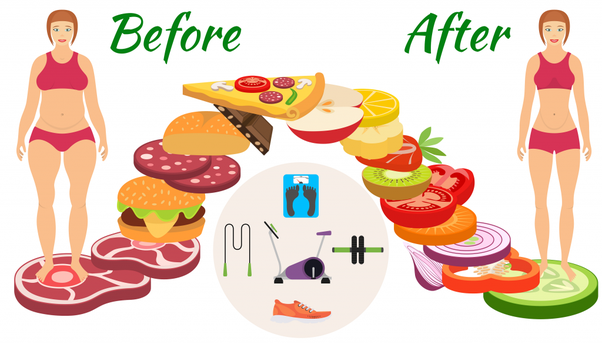
This plan focuses on whole grains, low-fat foods, and portion control to help you lose weight steadily while preserving muscle and energy levels.
Want to lose fat without feeling weak? This plan helps you do that without skipping meals. You’ll eat high-fiber foods, low fat dishes, and the right portions.
How does it help?
-
It avoids crash diets that slow down your metabolism.
-
Focuses on foods that reduce cravings, like vegetables and quinoa.
-
Encourages small plates and eating on time.
This is not just a weight loss diet, it’s a sustainable lifestyle.
3. Rich with High Fiber and Nutrient Density
Meals packed with high fiber vegetables and grains promote fullness, improve digestion, and support diabetes management naturally.
Fiber helps you stay full longer and keeps digestion smooth. Indian meals with vegetables, oats, and whole grains give you that. It also helps manage diabetes and keeps your blood sugar steady.
What’s good to eat?
-
Brown rice instead of white rice.
-
Vegetables like spinach, beans, and broccoli.
-
Soaked methi seeds in the morning.
4. Abundant in Plant-Based Proteins
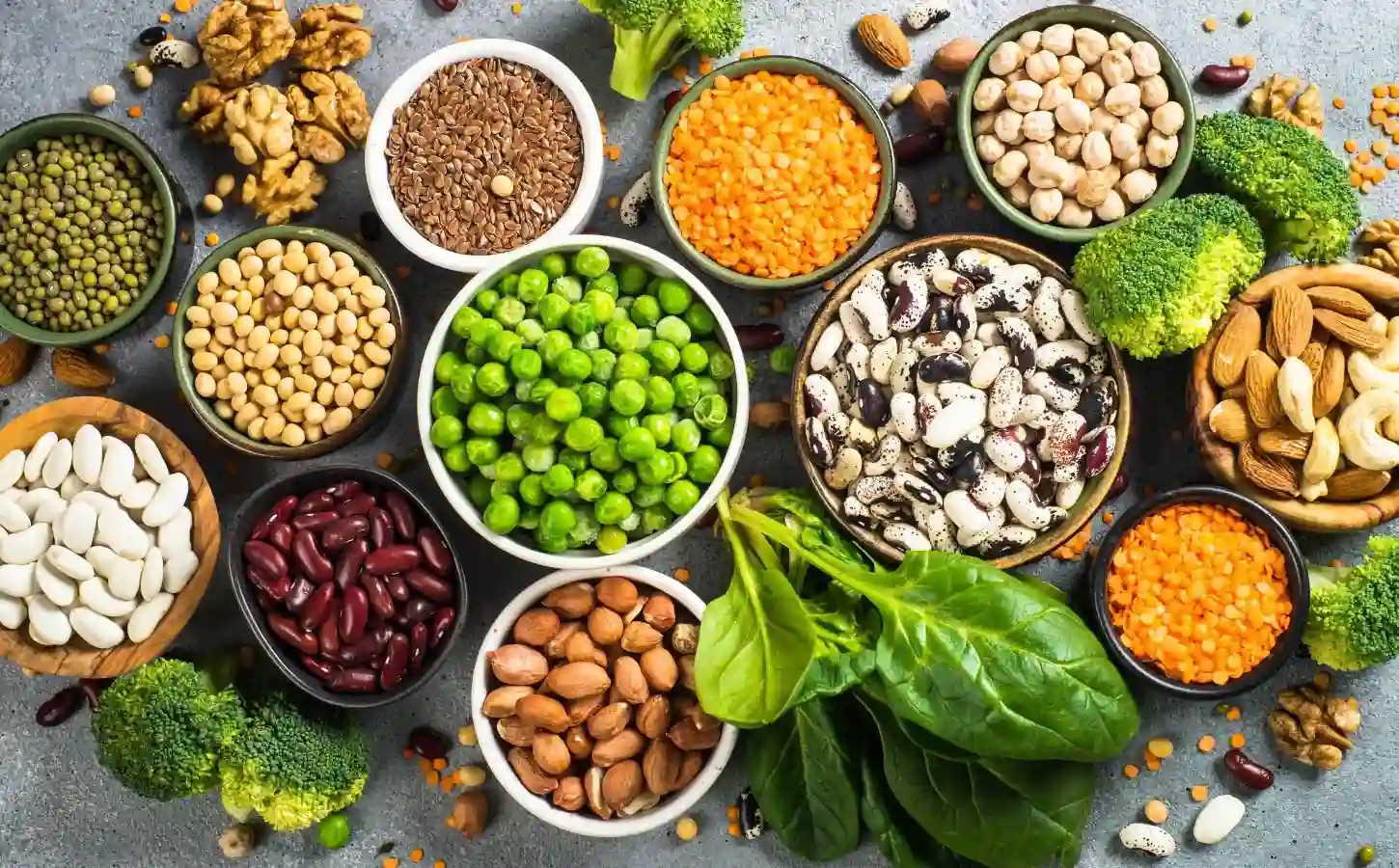
Sources like dal, tofu, and paneer supply essential protein for muscle repair and balanced nutrition.
Your body needs protein even if you're not eating meat. Luckily, Indian vegetarian food has many options.
Best protein foods:
-
Moong dal, masoor dal, and paneer
-
Tofu and sprouts
-
Curd lunch and roasted chana
These help your muscles grow and repair, especially if you're working out.
5. Packed with Antioxidants and Phytochemicals
Indian spices like turmeric and cumin boost immunity, reduce inflammation, and support overall health.
Every Indian kitchen has powerful spices. They don’t just add flavor—they help you stay healthy.
Top picks:
-
Turmeric helps fight inflammation.
-
Cumin improves digestion.
-
Mint chutney and lemon water help detox naturally.
6. Supports Cardiovascular and Metabolic Health
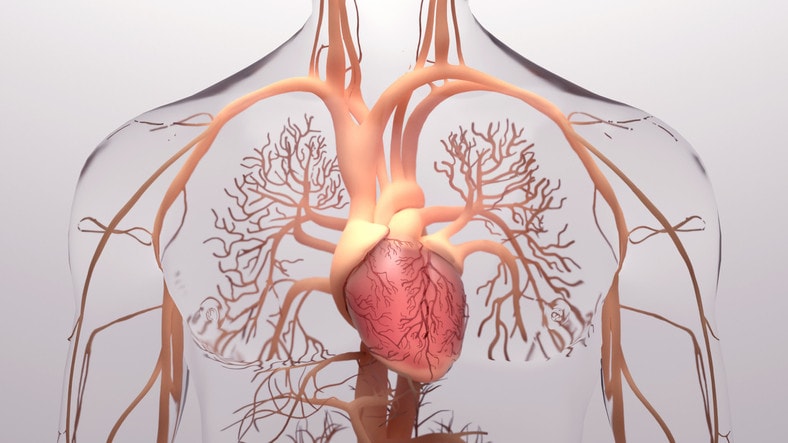
Replacing fried foods with olive oil, nuts, and whole grains enhances heart function and promotes healthy weight maintenance.
Heart health matters. Eating too many fried foods or processed foods puts pressure on your heart. This plan swaps those with better choices.
What to include:
-
Use olive oil instead of butter or ghee.
-
Eat nuts in small amounts for healthy fats.
-
Avoid packaged snacks and choose fresh meals.
This lowers the risk of cardiovascular disease and helps keep blood pressure normal.
7. Scientifically Linked to Longevity and Well Being
A plant-forward, balanced diet helps control diabetes, maintain a healthy weight, and support lifelong nutrition. A long, healthy life starts with what’s on your plate. According to Harvard School of Public Health, plant-based diets reduce the risk of early death by up to 25%.
Why it works:
-
Promotes diabetes management
-
Keeps your weight stable
-
Improves your mood and energy over time
This isn’t a quick fix, it’s your guide to smarter, lifelong eating.
“Want a nutrition plan built around your biometrics and health history? Get a Clinical Nutrition Plan Today with Balance Bite.”
The Complete Guide to Your Daily Meal Breakdown
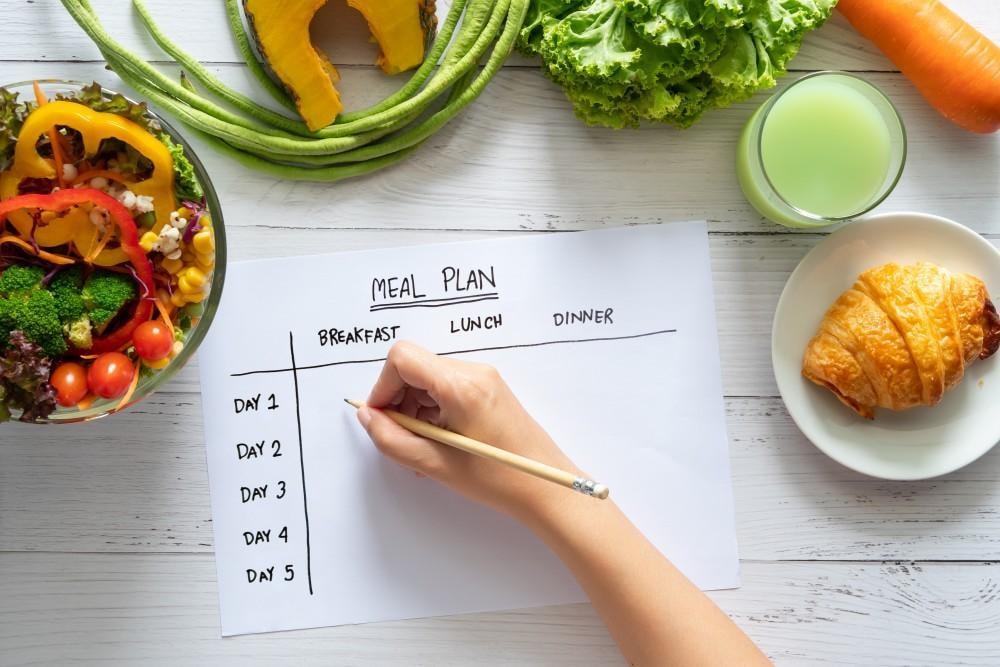
Follow a detailed diet chart for all seven days with simple Indian meals. Each plan blends protein, fiber, and whole grains for steady weight loss and lasting energy levels.
Day 1 – Light and Energizing Start
Ease into your meal plan with simple, high-fiber meals. Day 1 helps reset your metabolism with moong dal chilla, brown rice, and fresh fruits, boosting energy levels while supporting healthy weight goals.
-
Breakfast: Moong dal chilla with mint chutney + lemon water
-
Mid-Morning Snack: Fresh fruits (papaya or apple) + soaked methi seeds
-
Lunch: Brown rice + mixed vegetable curry + curd lunch
-
Evening Snack: Green tea + roasted chana
-
Dinner: Sautéed veggies + 1 multigrain roti + coconut water
Day 2 – Protein and Fiber Focus
A combination of quinoa, moong dal, and vegetables ensures the right protein intake for strength. You’ll eat meals rich in whole grains and healthy fats to keep digestion smooth and metabolism active.
-
Breakfast: Vegetable upma cooked in olive oil + chia seeds water
-
Mid-Morning Snack: Handful of almonds and walnuts
-
Lunch: Quinoa khichdi + sautéed spinach + salad
-
Evening Snack: Buttermilk or lemon water + roasted peanuts
-
Dinner: Moong dal + brown rice + stir-fried broccoli and carrots
Day 3 – Balanced and Filling
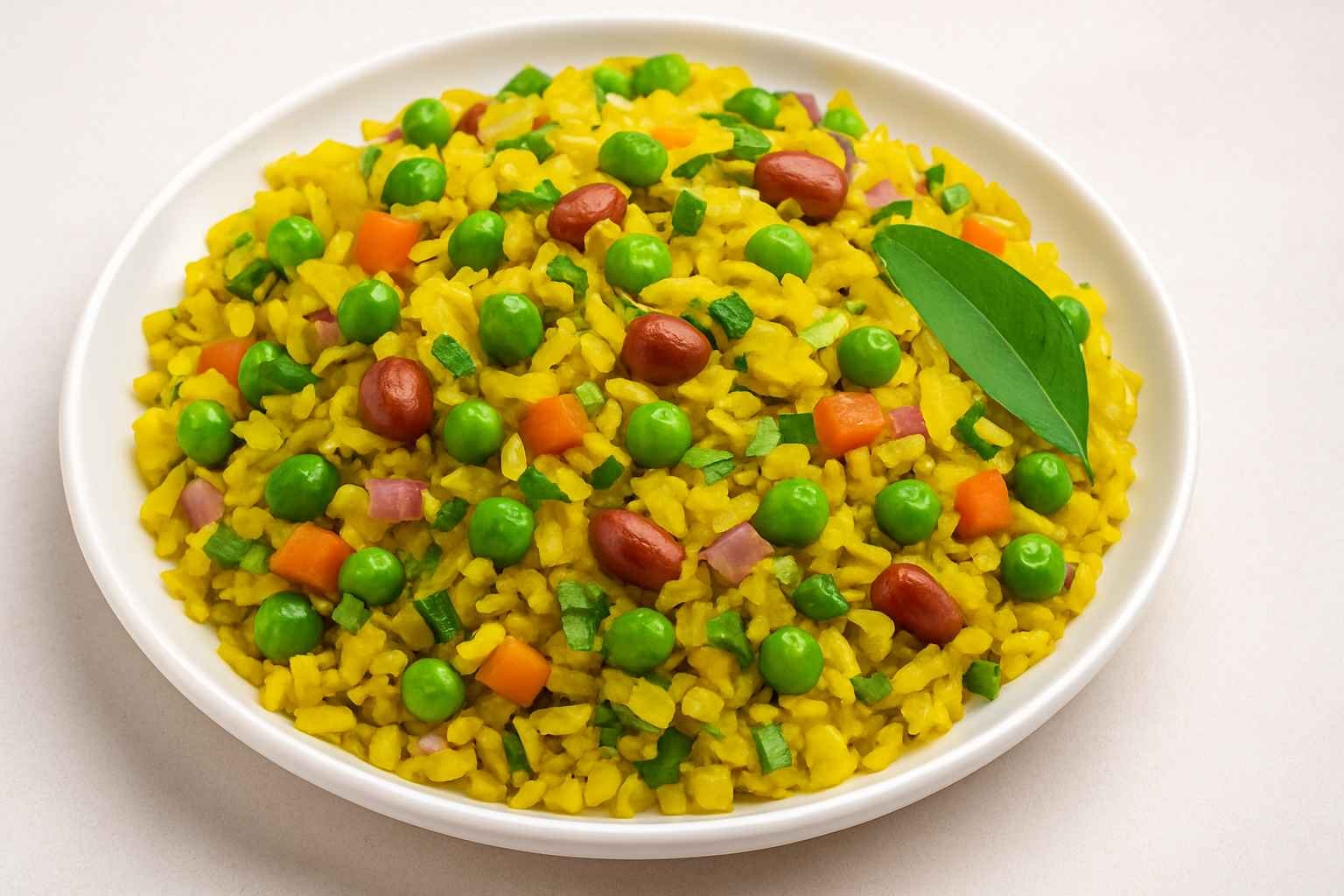
Balanced meals with paneer, curd, and fresh veggies maintain your nutritional needs. Day 3 reinforces portion awareness while improving sugar control and supporting sustainable weight loss.
-
Breakfast: Vegetable poha with peas and curry leaves + green tea
-
Mid-Morning Snack: 1 banana or guava + mint water
-
Lunch: Whole wheat roti + palak paneer + cucumber salad
-
Evening Snack: Coconut water + handful of mixed nuts
-
Dinner: Vegetable stew + millet dosa + curd
Day 4 – High Fiber & Gut-Friendly
Focus on oats, brown rice, and vegetables to support digestion. The fiber and nutrition from these foods improve gut bacteria and help manage medical conditions like diabetes naturally.
-
Breakfast: Oats porridge with chopped apples + chia seeds
-
Mid-Morning Snack: Soaked almonds + green tea
-
Lunch: Vegetable biryani (brown rice) + cucumber raita
-
Evening Snack: Lemon water + roasted chana
-
Dinner: Moong dal soup + sautéed veggies + 1 multigrain chapati
Day 5 – Detox and Refresh
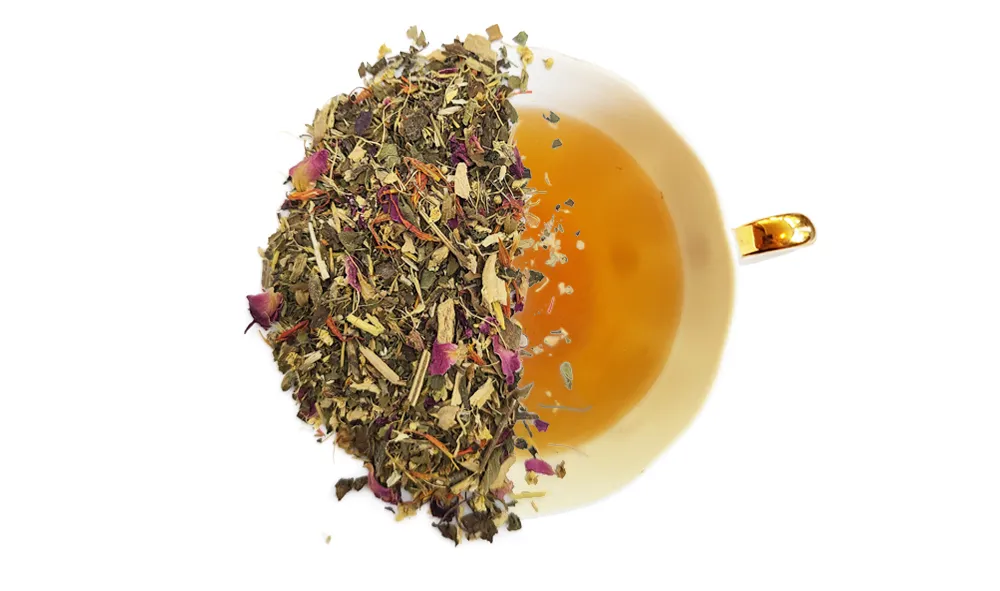
Light and antioxidant-rich, Day 5 improves cardiovascular health with low-fat recipes like paneer tikka and coconut water. You’ll experience better energy levels while staying aligned with your weight loss diet.
-
Breakfast: Vegetable smoothie with spinach, banana, and flaxseeds
-
Mid-Morning Snack: Coconut water + 1 orange
-
Lunch: Brown rice + rajma curry + salad
-
Evening Snack: Green tea + handful of walnuts
-
Dinner: Steamed vegetables + paneer tikka + lemon water
Day 6 – Strength and Recovery
This day balances protein and healthy fats to aid muscle repair. With meals like moong dal and vegetable curry, it helps stabilize sugar levels, reduce inflammation, and build long-term nutrition habits.
-
Breakfast: Vegetable sandwich on whole grain bread + buttermilk
-
Mid-Morning Snack: Seasonal fruit bowl + chia water
-
Lunch: Vegetable pulao + moong dal + salad
-
Evening Snack: Herbal tea + roasted peanuts
-
Dinner: Vegetable curry + millet roti + curd lunch
Day 7 – Balanced Closure for the Week
Day 7 focuses on maintaining overall health and a healthy weight through whole grains like quinoa and sautéed veggies. It’s a restorative finish that helps you stay consistent beyond this meal plan.
-
Breakfast: Idli with sambhar + mint chutney
-
Mid-Morning Snack: Cucumber sticks + lemon water
-
Lunch: Quinoa day – quinoa pulao with mixed veggies + curd
-
Evening Snack: Green tea + handful of roasted chana
-
Dinner: Moong dal chilla + sautéed veggies + coconut water
Indian Foods to Include and Avoid in Your Diet Plan
Discover whole grains, healthy fats, and protein-rich foods that fit your balanced diet. Learn which fried or processed foods to avoid for better weight loss and nutrition.
Foods to Include
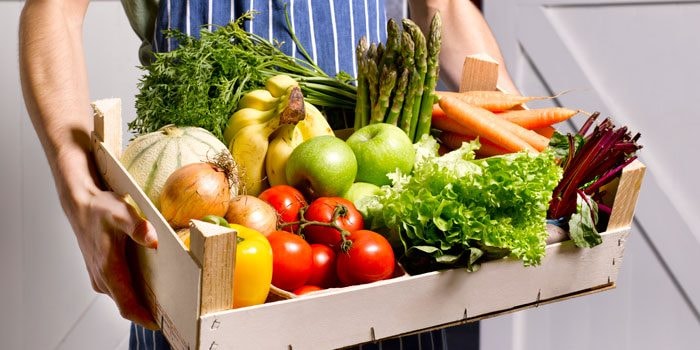
-
Whole Grains for Sustained Energy: Brown rice, quinoa, whole wheat roti, millets (ragi, jowar, bajra). They’re high fiber and improve digestion while keeping you full longer. Use them to replace white rice for better calorie control and blood sugar balance.
-
Protein-Rich Vegetarian Foods: Moong dal, toor dal, masoor dal, paneer, tofu, sprouts, soaked methi seeds, roasted chana. Essential for muscle repair, fat loss, and maintaining energy levels throughout your meal plan.
-
Healthy Fats for Heart Health: Nuts (almonds, walnuts), seeds (chia seeds, flaxseeds), olive oil, coconut oil (in moderation). Provide healthy fats that support the heart and improve nutrient absorption.
-
Fresh Fruits and Vegetables: Spinach, broccoli, carrots, beans, beetroot, cucumber, and tomatoes. Fruits: papaya, guava, apple, pomegranate, and orange. These nutrient-rich foods are loaded with antioxidants, fiber, and vitamins essential for overall health and diabetes management.
-
Gut-Friendly and Hydrating Foods: Curd lunch, coconut water, lemon water, and mint chutney Support digestion, hydration, and metabolic balance. Great add-ons for portion control and post-meal detox.
-
Traditional Indian Meals Made Healthy: Sautéed veggies, mixed vegetable curry, moong dal chilla, upma, idli, poha with vegetables. Combine with green tea for a light, satisfying meal that fits easily into a weight loss plan.
“Curious how these meals look in real life? See Sample Meal Box & Groceries from Balance Bite to visualize your week.”
Foods to Avoid
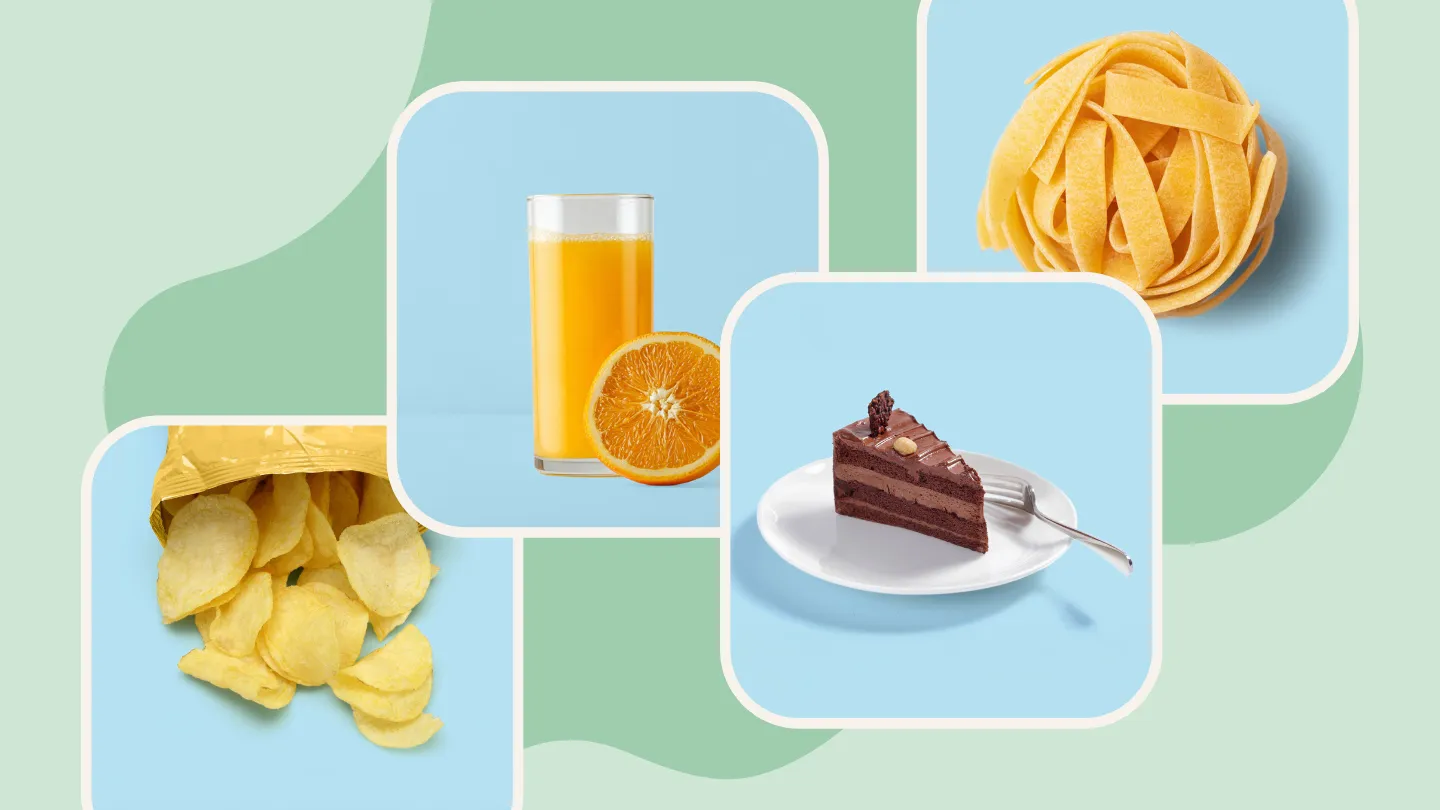
-
Fried and Processed Foods: Pakoras, samosas, chips, bhujia, fried papad, instant noodles. High in trans fats and salt, leading to poor digestion and heart disease.
-
Packaged and Refined Foods: Packaged snacks, refined sugar, white rice, bakery items, soft drinks. These spike insulin levels, promote fat storage, and disrupt weight loss progress.
-
Overly Creamy or Oily Dishes: Malai kofta, butter paneer, heavy gravies, and fried sweets. Loaded with saturated fats that hinder your balanced diet goals and cause bloating.
-
Excess Salt and Sugar Additions: Limit extra salt, sugar, ketchup, and sauces. Replace with natural flavor enhancers like mint chutney, lemon juice, or spices (jeera, turmeric, ajwain).
-
Crash Diet or Skipping Meals Approach: Skipping meals or following crash diets lowers metabolism and leads to nutrient deficiencies. Instead, focus on portion control and small, frequent meals that maintain energy levels and improve overall well-being.
It’s also important to limit food items that are fried, high in sugar, or processed to maintain steady progress and balanced nutrition.
Common Mistakes to Avoid While Following this Diet Plan
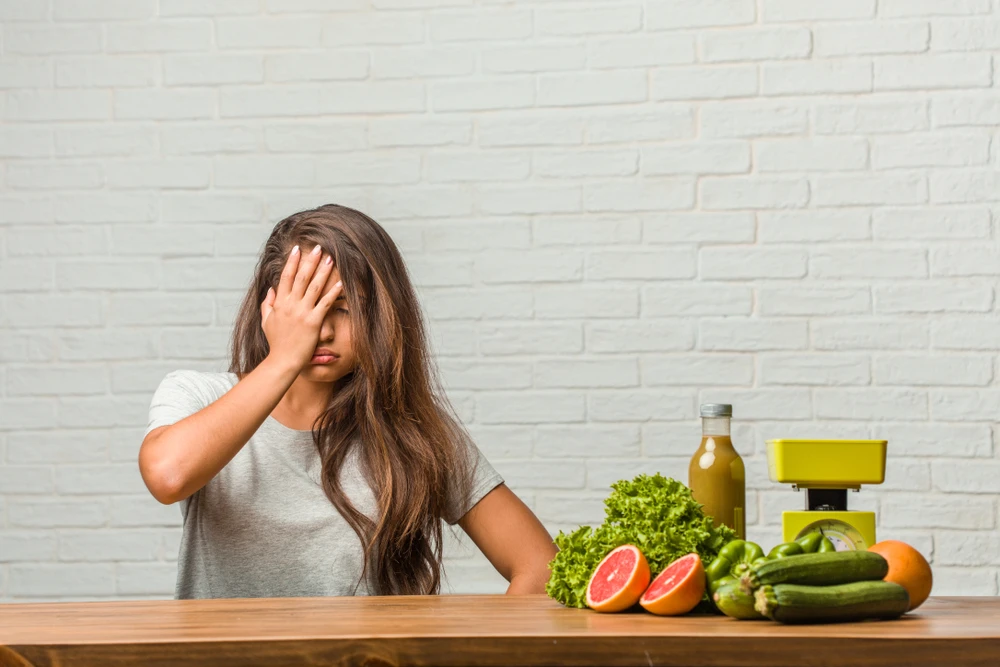
Avoid skipping meals, overeating, or ignoring portion control. Learn how poor choices like excess sugar, fried foods, and processed foods can stall weight loss and affect nutrition. This section helps you correct everyday habits to maintain a healthy weight and long-term well being.
1. Skipping Meals to Lose Weight Faster
Skipping meals slows metabolism and disrupts calorie intake. Follow your diet chart and diet plan for weight loss with regular, small meals to stay energized and burn fat steadily.
What happens?
If you skip meals, your body slows down. You feel tired and eat more later.
How to avoid it:
-
Eat 3 main meals and 2 light snacks daily.
-
Stick to your meal plan.
-
Include soaked methi seeds or lemon water in the morning to boost metabolism.
2. Ignoring Portion Control
Oversized servings hurt your weight loss diet. Using small plates helps manage calorie intake, control hunger, and maintain steady progress on your Indian diet plan.
Eating large portions means more calorie intake than you need.
How to avoid it:
-
Use small plates to limit food size.
-
Fill half your plate with veggies.
-
Avoid second servings.
-
Stop eating when you're 80% full.
3. Not Balancing Macronutrients Properly
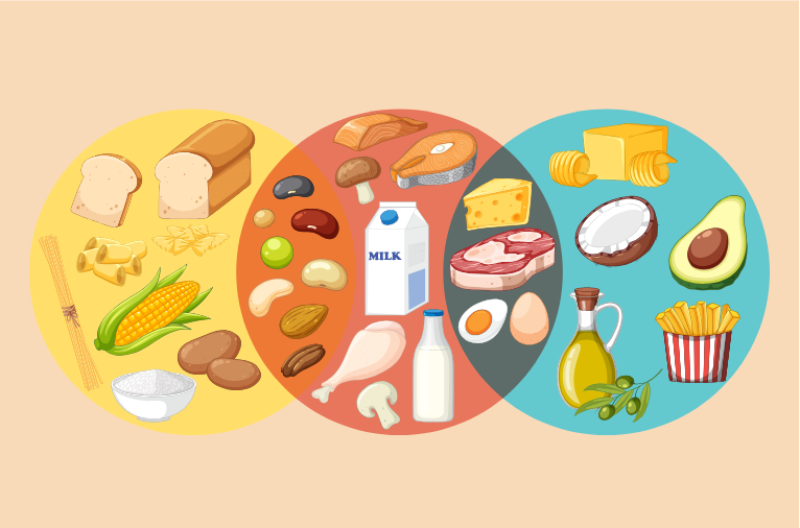
Avoid carb-heavy meals, add more protein and healthy fats. Grilled fish or chicken breast are great lean options for non-vegetarians following a plan for weight loss.
Too many carbs and not enough protein make you hungry soon.
How to avoid it:
-
Pair roti or brown rice with dal, tofu, or paneer.
-
Add chia seeds, olive oil, or curd lunch for healthy fats.
-
For non vegetarians, add grilled fish or chicken breast.
4. Overconsuming “Healthy” but Calorie-Dense Foods
Too many nuts, oils, or paneer can cause weight gain. Watch portions and balance your calorie intake to maintain steady results.
-
Measure nuts (1 tablespoon daily is enough).
-
Choose low-fat paneer.
-
Limit oil to 2 teaspoons per day.
5. Neglecting Hydration and Gut Health
Drink enough lemon water, curd lunch, or coconut water daily. Proper hydration supports digestion and complements your diet plan for weight.
Low water intake slows digestion. It may cause bloating, constipation, and low energy.
How to Avoid It:
-
Drink 8 - 10 glasses of water.
-
Include buttermilk or coconut water with lunch.
-
Add curd and fiber-rich veggies to support gut health.
6. Expecting Immediate Weight Loss Results
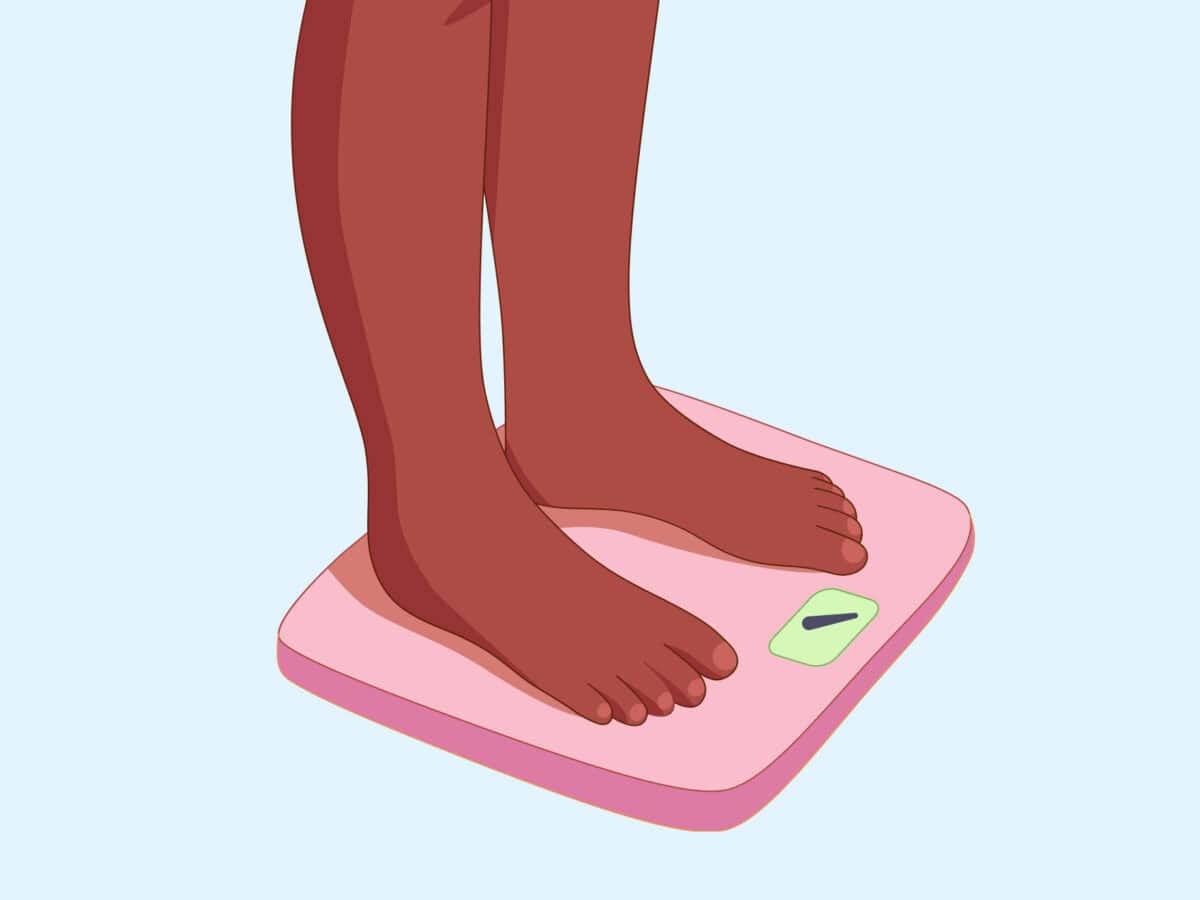
Avoid unrealistic goals or crash diets. True progress takes time. Pair your weight loss diet with brisk walking and portion awareness.
Crash diets harm your health. Quick weight loss is often water, not fat. It may come back.
How to Avoid It:
-
Set a goal of 0.5 to 1 kg loss per week.
-
Include a regular physical activity like walk 30 minutes daily.
-
Follow your Indian meal plans patiently.
7. Not Consulting a Professional When Needed
If you have medical conditions, consult a registered dietitian or an expert with a master’s degree in nutrition for safe, effective results from your plan for weight loss.
You may follow the wrong diet unknowingly. It could affect your blood sugar, heart, or energy.
How to Avoid It:
-
Get a personalized plan if you have diabetes, PCOD, or other health issues.
-
Speak with a certified dietitian.
-
Ask for adjustments based on your nutritional needs and medical conditions.
"Before you go on, speak with a Certified Nutritionist at Balance Bite to tailor this plan to your needs and avoid pitfalls."
FAQs
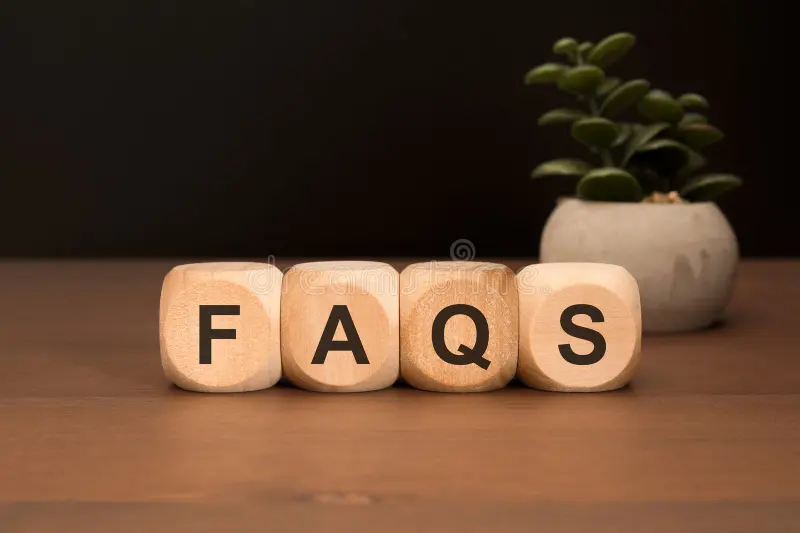
Find quick answers on how to create a diet chart, what to eat, and how much weight you can lose safely. Includes expert tips from a registered dietitian for sustainable nutrition.
1. How to create a 7-day diet plan for weight loss?
Start by setting your calorie intake goal based on your body type and activity level. Include whole grains, high-fiber vegetables, lean protein, and healthy fats. Structure 3 main meals and 2 snacks each day. Use portion control to avoid overeating and focus on nutrient-rich foods.
2. How do I prepare a diet chart for a 7-day meal plan, Indian style?
Follow a traditional Indian diet plan with balanced macronutrients. Combine dal, roti, rice, sabzi, curd, and fruits. Include coconut water or lemon water to stay hydrated. Keep fried foods, sugar, and packaged snacks to a minimum.
3. How much weight can I lose in 7 days with this meal plan?
With portion control and consistent meals, most people can lose 0.5 to 1.5 kg in a week. Weight loss depends on your current weight, activity, and how well you follow the vegetarian diet.
4. How can non-vegetarians transition to this vegetarian diet plan easily?
Start by replacing one meal a day, like chicken curry with dal, tofu, or paneer. Try grilled veggies or moong dal chilla instead of meat. Slowly add more plant-based meals until your body adjusts.
5. How do I maintain weight loss after completing the 7-day meal plan?
Continue following the diet chart with healthy food choices, daily brisk walking, and hydration. Avoid crash diets and eat mindfully using small plates. Talk to a registered dietitian for a long-term plan suited to your health and nutritional needs.
Conclusion
A 7-day vegetarian meal plan isn’t just about cutting calories; it’s about eating smart. With balanced meals rich in fiber, protein, and healthy fats, you can support weight loss, manage health issues like diabetes, and boost overall energy.
This guide helps you avoid common mistakes, stay consistent, and enjoy real Indian food without guilt. Whether you're just starting or looking to reset your routine, follow the meal chart, stay hydrated, and listen to your body.
For best results, personalize your plan with a certified dietitian. Small daily changes lead to long-term success. Your healthy lifestyle starts here.




















Leave a comment
Translation missing: en.blogs.comments.discription